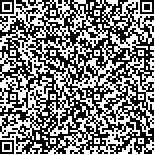|
|
| |
|
|
| 本文已被:浏览 113次 下载 62次 |

码上扫一扫! |
|
|
| 基于脑脊液冲刷规律探讨枣仁安神颗粒对大鼠睡眠作用机制研究 |
|
刘含之, 王浩, 潘彦舒, 周满元, 方琪, 孙婧妍
|
|
北京中医药大学, 北京 102400
|
|
| 摘要: |
| [目的]基于脑脊液分泌和冲刷作用规律探讨枣仁安神颗粒改善正常大鼠睡眠状态的作用机制。[方法]选取雄性SD大鼠44只,随机分为正常组和枣仁安神颗粒组,每组22只。连续8 d对枣仁安神颗粒组大鼠灌服枣仁安神颗粒水溶液,正常组以等量纯净水灌服作为对照。分析大鼠给药第6至8天脑电(EEG)、肌电(EMG)特征,觉醒期、非快眼动睡眠期(NREM)、快眼动睡眠期(REM)时长,给药8 d后,超高场强核磁共振成像设备检测大鼠中脑导水管中段处脑脊液平均流速,酶联免疫吸附(ELISA)法测定大鼠大脑前额叶皮质水通道蛋白1(AQP1)和钠离子(Na+)-钾离子(K+)-氯离子(Cl-)协同转运蛋白1(NKCC1)含量,蛋白免疫印迹(Western Blot)法检测大脑前额叶皮质AQP1、NKCC1蛋白表达(因EEG植入手术含金属,无法进行核磁共振监测,故每组用于EEG描述的有8只大鼠,核磁共振监测的有6只大鼠,检测蛋白表达情况的有8只大鼠)。[结果]与正常组相比,枣仁安神颗粒组觉醒期时间缩短(P<0.01),睡眠时间增加(P<0.01),NREM、REM时间增加(P<0.01),枣仁安神颗粒组第6、7、8天之间的觉醒时间逐日减少(P<0.01),睡眠时间逐日增加(P<0.01),NREM、REM时间增加(P<0.01),对大鼠24 h睡眠结构产生影响(P<0.01),中脑导水管中段处脑脊液平均流速加快(P<0.05),大脑前额叶皮质AQP1、NKCC1含量增加(P<0.05),大脑前额叶皮质AQP1、NKCC1蛋白表达升高(P<0.05)。[结论]枣仁安神颗粒可以显著缩短正常大鼠觉醒期,延长睡眠期,特别是NREM与REM,其机制可能与增加脑脊液分泌蛋白AQP1、NKCC1的蛋白表达从而促进脑脊液冲刷有关。 |
| 关键词: 枣仁安神颗粒 无线脑电技术 超高场强核磁共振成像 脑脊液 睡眠 水通道蛋白1 钠离子-钾离子-氯离子协同转运蛋白1 |
| DOI:10.11656/j.issn.1673-9043.2024.10.07 |
| 分类号:R285.5 |
| 基金项目:国家自然科学基金面上项目(82174331);北京中医药大学基本科研业务费重点攻关项目(2020-JYB-ZDGG-017);北京中医药大学校级科研纵向发展基金项目(2019-ZXFZJJ-064)。 |
|
| Research on the mechanism of sedative effect of Zaoren Anshen Granules on the sleep of rats based on the analysis of cerebrospinal fluid flushing patterns |
|
LIU Hanzhi, WANG Hao, PAN Yanshu, ZHOU Manyuan, FANG Qi, SUN Jingyan
|
|
Beijing University of Chinese Medicine, Beijing 102400, China
|
| Abstract: |
| [Objective] To investigate the mechanism of Zaoren Anshen Granules in improving sleep in normal rats based on the cerebrospinal fluid secretion and flushing effect. [Methods] Forty-four male SD rats were selected and randomly divided into the normal group and the Zaoren Anshen Granule group,with 22 rats in each group. The rats in the Zaoren Anshen Granules group were given aqueous solution of Zaoren Anshen Granules for 8 consecutive days,and the normal group was controlled with an equal amount of purified water. EEG and EMG characteristics,the length of wakefulness,non-rapid eye movement(NREM) and rapid eye movement(REM) were analyzed from the 6th to the 8th day of the administration of Zaoren Anshen Granules. After 8 days of the administration of Zaoren Anshen Granules,the average flow rate of the cerebrospinal fluid in the middle portion of the midbrain ducts of the rats was detected by ultra-high-field magnetic resonance imaging equipment,and the average flow rate of the cerebrospinal fluid in the middle portion of the middle cerebral ducts of the rats was measured by ELISA. The average flow rate of cerebrospinal fluid in the middle cerebral conduit of rats was measured by ultra-high-field magnetic resonance imaging equipment,ELISA,and Western Blot for aquaporin 1(AQP1) and Na+-K+-Cl- cotransporter 1(NKCC1). AQP1 and NKCC1 protein expression in the prefrontal cortex of the brain was detected by Western Blot. [Results] Compared with the normal group,the awakening period time was shortened(P<0.01),the sleep time was increased(P<0.01), and both NREM period and REM period were increased(P<0.01) in the Zaoren Anshen Granule group,and the awakening time decreased day by day(P<0.01),and the sleep time was increased day by day(P<0.01) between days 6,7 and 8 in the Zaoren Anshen Granule group,and both NREM period and REM period were increased (P<0.01), the 24 h sleep structure of normal rats was affected(P<0.01),the average flow rate of cerebrospinal fluid at the middle part of the midbrain aqueduct was significantly accelerated(P<0.05),the content of AQP1 and NKCC1 in the prefrontal cortex of the brain was significantly increased(P<0.05),and the expression of AQP1 and NKCC1 proteins in the prefrontal cortex of the brain was significantly elevated(P<0.05). [Conclusion] Zaoren Anshen Granules significantly shortened the awakening period and lengthened the sleep period,especially the NREM and REM periods,in normal rats,and the mechanism may be related to the increase in the protein expression of cerebrospinal fluid secretion proteins,AQP1 and NKCC1,thus promoting the cerebrospinal fluid flushing. |
| Key words: Zaoren Anshen Granule wireless electroencephalography technology ultra-high field magnetic resonance imaging cerebrospinal fluid sleep aquaporin 1 Na+-K+-Cl- cotransporter 1 |
|
